In today’s fast-paced world, many individuals find themselves in professions that require them to spend long hours on their feet. Whether you’re a nurse, retail worker, chef, or teacher, having a job that demands prolonged standing can take a toll on your feet and overall well-being. This article explores the importance of arch support for individuals with standing jobs, shedding light on the benefits it offers and how it can significantly improve one’s quality of life.
Introduction
Working in jobs that require standing for extended periods can be physically demanding and taxing on your feet. In this article, we will delve into the significance of arch support for individuals engaged in such professions. Discover how the right arch support can alleviate discomfort, prevent common foot problems, and ultimately improve your overall work experience.
Understanding Arch Support
Arch support refers to the structure or devices designed to provide added support to the arches of your feet. The arches are the curved areas that run along the bottom of your feet, helping to distribute your body weight evenly and absorb shock while you walk or stand.
The arches of your feet are vital for maintaining balance and absorbing the impact of each step you take. They come in three primary types:
- Low Arches (Flat Feet): People with low arches, also known as flat feet, have minimal arch definition. This can result in overpronation, where the feet roll inward excessively. Arch support is crucial for stabilizing and supporting flat feet.
- Medium Arches: Individuals with medium arches have a natural curve to their feet, which allows for effective weight distribution. While they may not require extensive arch support, it can still provide added comfort during prolonged standing.
- High Arches: High arches have a more pronounced curve, causing the feet to bear a greater amount of weight on the ball and heel. Arch support is essential for individuals with high arches to reduce pressure points and distribute weight evenly.
Arch support can take various forms, including orthotic insoles, specialized shoes, and custom-made orthotics. These support mechanisms help maintain the arch’s structure and promote proper foot alignment. Whether you have flat, medium, or high arches, understanding and investing in the right arch support can significantly improve your comfort and reduce the risk of foot-related issues, especially if you have a job that requires extended periods of standing.
The Impact of Standing Jobs
Many professionals, such as nurses, retail workers, chefs, and teachers, often find themselves in job roles that require them to stand for extended periods. While these careers offer valuable contributions to society, the physical demands of prolonged standing can have a significant impact on one’s well-being. Let’s delve into the effects of standing jobs on individuals:
- Physical Fatigue: Standing for hours on end can lead to physical fatigue. This constant load on the legs and feet can result in soreness, muscle fatigue, and overall discomfort.
- Foot Pain: Prolonged standing can cause foot pain, particularly in the arches, heels, and balls of the feet. This discomfort can be exacerbated by unsupportive footwear.
- Leg and Back Strain: The strain isn’t limited to the feet; it extends to the legs and lower back. Over time, this strain can lead to chronic issues if left unaddressed.
- Varicose Veins: Jobs that involve standing for long periods can increase the risk of developing varicose veins. These swollen, twisted veins can be painful and unsightly.
- Poor Circulation: Standing for extended durations can impede proper blood circulation, potentially leading to swelling and discomfort.
- Reduced Productivity: Physical discomfort can impact one’s ability to concentrate and perform effectively, potentially reducing productivity on the job.
- Increased Risk of Injury: Prolonged standing increases the likelihood of accidents or injuries due to fatigue and muscle strain.
Understanding the impact of standing jobs is crucial for both employers and employees. It underscores the importance of implementing measures to mitigate these effects, such as providing ergonomic workstations, supportive footwear, and, as discussed in previous sections, arch support. By addressing the physical toll of standing jobs, individuals can enjoy improved comfort, health, and job satisfaction.
Common Foot Problems
Working in professions that require prolonged standing can put individuals at an increased risk of experiencing various foot problems. Here are some of the common foot issues that people with standing jobs often encounter:
- Plantar Fasciitis: Plantar fasciitis is a painful condition that occurs when the band of tissue (plantar fascia) that runs along the bottom of the foot becomes inflamed. It can result in sharp heel pain, making it difficult to walk or stand comfortably.
- Flat Feet (Pes Planus): Flat feet, or fallen arches, happen when the arches of the feet collapse, causing the entire sole to make contact with the ground. This can lead to discomfort, fatigue, and a higher risk of developing other foot problems.
- Achilles Tendonitis: Prolonged standing can strain the Achilles tendon, which connects the calf muscles to the heel bone. Tendonitis in this area can cause pain and stiffness, particularly in the back of the heel.
- Bunions: Bunions are bony protrusions that develop at the base of the big toe. They can be painful and lead to deformities in the toe joint.
- Corns and Calluses: The repeated friction and pressure from standing can cause the skin to thicken and harden in certain areas, leading to the development of corns and calluses. These can be painful and uncomfortable.
- Ingrown Toenails: Jobs that require tight or ill-fitting shoes can increase the risk of ingrown toenails. This condition occurs when the edge of a toenail grows into the skin, causing pain and potential infection.
- Swollen Ankles: Prolonged standing can result in swollen ankles due to poor circulation and fluid buildup.
- Foot Fatigue: General foot fatigue is common among individuals with standing jobs. It can manifest as aching, burning, or discomfort in the feet.
- Foot and Leg Cramps: Muscular cramps in the feet and legs can occur due to prolonged muscle strain from standing for extended periods.
- Stress Fractures: In some cases, excessive standing can lead to stress fractures in the bones of the feet. These fractures can be painful and require medical attention.
It’s important to recognize these common foot problems early and take steps to prevent them or seek appropriate treatment when necessary. Proper arch support, supportive footwear, and regular foot care can go a long way in maintaining foot health for those with standing jobs.
The Role of Arch Support
Arch support plays a crucial role in maintaining the health and comfort of your feet, especially for individuals who have jobs that require prolonged standing or walking. Let’s explore the essential functions of arch support:
- Proper Weight Distribution: One of the primary functions of arch support is to ensure that your body weight is evenly distributed across your feet. This helps prevent excessive pressure on specific areas of your feet, such as the heels and balls of the feet. When your weight is distributed more evenly, it reduces discomfort and fatigue during long periods of standing or walking.
- Reducing Strain on Ligaments: Arch support helps in reducing the strain on the ligaments, tendons, and muscles in your feet. Without proper support, these structures can become overworked and stressed, leading to conditions like plantar fasciitis and Achilles tendonitis. Arch support alleviates some of this strain, reducing the risk of such injuries.
- Improved Posture: Proper arch support encourages you to stand and walk with a more natural and balanced alignment. This can improve your overall posture, preventing issues such as back pain and reducing the risk of developing musculoskeletal problems over time.
- Shock Absorption: Arch support helps your feet absorb the shock generated when you walk or stand on hard surfaces. This is particularly important for people with jobs that involve walking on concrete or other unforgiving surfaces. Absorbing shock efficiently can prevent the jarring impact that can lead to discomfort and injuries.
- Alignment and Stability: Arch support contributes to the alignment and stability of your feet. It ensures that your feet maintain their natural arch shape, even during prolonged periods of weight-bearing activity. This helps prevent excessive pronation (inward rolling of the feet) and supination (outward rolling), which can lead to strain and discomfort.
- Preventing Foot Fatigue: By reducing the strain and pressure on your feet, arch support helps prevent foot fatigue. This means you can stand or walk for longer periods without feeling as tired or uncomfortable.
- Enhanced Athletic Performance: Arch support is not limited to work-related standing but is also valuable for athletes. It can improve athletic performance by providing the necessary stability and support for various physical activities.
In summary, arch support is not merely a convenience but a vital element in maintaining the health and comfort of your feet, especially in professions that require extended periods of standing or walking. Whether through orthotic insoles, arch support shoes, or custom-made orthotics, investing in proper arch support can significantly improve your overall well-being and reduce the risk of foot-related problems.
Choosing the Right Arch Support
When it comes to selecting the right arch support, one size doesn’t fit all. Different individuals have varying arch types and foot conditions, so it’s essential to choose the support that suits your specific needs. One highly recommended option to consider is the Atlas Arch Support. Let’s explore the factors to keep in mind when selecting arch support and the benefits of the Atlas Arch Support:
Factors to Consider When Choosing Arch Support:
- Arch Type: Determine your arch type—whether you have low (flat), medium, or high arches. The right arch support should complement your natural arch shape.
- Foot Condition: If you have specific foot conditions like plantar fasciitis or overpronation, consult with a healthcare professional or podiatrist to understand which type of arch support is most suitable.
- Comfort and Fit: Arch support should feel comfortable and provide a secure fit in your shoes. Ensure that it doesn’t cause any additional pressure points or discomfort.
- Activity Level: Consider your daily activities. If you have an active job or engage in sports, you may need arch support designed for more rigorous activities.
- Shoe Compatibility: Ensure that the arch support you choose fits well in your existing shoes or consider purchasing footwear with built-in arch support.
- Material and Durability: Look for arch supports made from high-quality, durable materials that can withstand the demands of your daily routine.
Atlas Arch Support:
Atlas Arch Support is a highly recommended arch support option known for its effectiveness and comfort. Here’s why it stands out:
- Customizable Fit: The Atlas Arch Support is designed to provide a customizable fit, allowing you to adjust the level of support according to your unique requirements.
- Versatility: It can be easily placed in various types of shoes, from athletic sneakers to work boots, making it suitable for a wide range of activities and professions.
- Targeted Support: The Atlas Arch Support is engineered to provide targeted support to the arches of your feet, helping to distribute your body weight evenly and reduce strain.
- Durability: Made from durable materials, Atlas Arch Support is built to last, ensuring that you receive long-lasting benefits from your investment.
- Reduced Discomfort: Users often report a significant reduction in foot discomfort, making it an excellent choice for individuals with standing jobs.
- Positive User Feedback: Many individuals who have tried the Atlas Arch Support have praised its effectiveness in improving their comfort and reducing foot-related problems.
In conclusion, when choosing arch support, consider factors like your arch type, foot condition, comfort, and activity level. The Atlas Arch Support, known for its customizable fit and positive user feedback, is a valuable option to explore for individuals with standing jobs or anyone seeking enhanced foot support. Remember that investing in the right arch support can lead to improved comfort and overall well-being, especially in professions that require prolonged periods of standing.
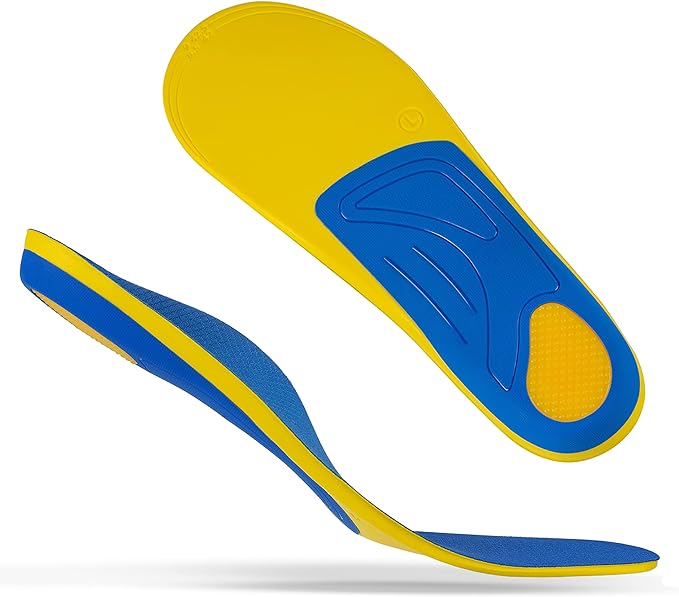
Benefits of Arch Support for Standing Jobs
If you have a job that demands extended periods of standing, you’re likely well aware of the physical toll it can take on your feet and overall well-being. Fortunately, arch support can provide numerous benefits for individuals in such professions. Here are some of the key advantages of using arch support in standing jobs:
- Pain Reduction: One of the most significant benefits of arch support is the reduction in foot pain. It helps distribute your body weight more evenly across your feet, minimizing pressure on specific areas like the heels and arches. This can alleviate discomfort and prevent the development of chronic pain conditions.
- Enhanced Comfort: Arch support significantly improves the overall comfort of your feet. It acts as a cushion, reducing the impact and shock absorption while standing, which is especially valuable on hard surfaces.
- Improved Posture: Proper arch support encourages better posture. When your feet are properly aligned and supported, it positively influences your overall body alignment, reducing the risk of back pain and musculoskeletal issues.
- Long-Term Health: Investing in arch support is an investment in your long-term foot health. It helps prevent common foot problems that can develop over time, such as plantar fasciitis, flat feet, and overpronation. By reducing strain on your feet and lower limbs, it contributes to your overall well-being.
- Increased Productivity: With reduced foot pain and improved comfort, you can focus better on your work without constant distractions. This can lead to increased productivity and job satisfaction.
- Injury Prevention: Arch support can help prevent injuries associated with prolonged standing, such as Achilles tendonitis or stress fractures. It provides stability to your feet, reducing the risk of accidents and strain-related injuries.
- Customized Solutions: Depending on your specific needs, you can find arch support solutions tailored to your foot type and job requirements. Whether it’s orthotic insoles, supportive shoes, or custom-made orthotics, there are options to suit every individual.
- Enhanced Energy: The added comfort and reduced fatigue from arch support can boost your energy levels, making long shifts more manageable.
- Overall Well-Being: By alleviating foot discomfort and pain, arch support contributes to your overall well-being. It enables you to enjoy your time off work without the constant reminder of aching feet.
- Better Quality of Life: Ultimately, arch support can lead to a better quality of life. It allows you to continue pursuing your career while minimizing the physical toll, ensuring that your job doesn’t compromise your health and happiness.
In conclusion, arch support is not just a convenience but a necessity for individuals with standing jobs. It offers a wide range of benefits, from pain reduction and improved comfort to injury prevention and long-term health. By investing in the right arch support solutions, you can significantly enhance your professional and personal life, ensuring that your feet remain comfortable and healthy throughout your career.
Tips for Using Arch Support
Arch support can provide significant relief and comfort for individuals with standing jobs. To maximize its effectiveness and ensure your feet receive the support they need, consider the following tips when using arch support:
- Choose the Right Arch Support: Select arch support that matches your specific needs. Your choice should depend on your arch type, foot condition, and the type of shoes you wear regularly.
- Proper Fit: Ensure that your arch support fits snugly in your shoes without causing any discomfort. If necessary, trim or adjust the support to achieve the right fit.
- Gradual Adjustment: If you’re new to using arch support, give your feet time to adjust. Start by wearing them for shorter durations and gradually increase the time as your feet adapt.
- Pair with Supportive Footwear: Combining arch support with supportive footwear is highly effective. Look for shoes with built-in arch support or choose shoes that accommodate your chosen arch support product.
- Good Hygiene: Maintain proper foot hygiene to prevent odors and infections. Clean your arch support regularly and let it air out to prevent the buildup of moisture and bacteria.
- Replace When Necessary: Arch support products may lose their effectiveness over time due to wear and tear. Replace them as recommended by the manufacturer or when you notice signs of deterioration.
- Consult a Specialist: If you have specific foot conditions or concerns, consider consulting a podiatrist or orthopedic specialist. They can provide personalized recommendations and guidance on the best arch support for your needs.
- Monitor Your Comfort: Pay attention to how your feet feel while using arch support. If you experience any discomfort, adjust the fit or consult a professional for advice.
- Combine with Foot-Strengthening Exercises: To complement the benefits of arch support, consider incorporating foot-strengthening exercises into your routine. These exercises can help improve your foot’s natural support structures.
- Rotate Footwear: If possible, rotate between different pairs of shoes with arch support to prevent excessive wear on one pair and provide your feet with variety.
- Regular Check-Ups: Periodically reassess your foot health and arch support needs. Your feet may change over time, and it’s essential to ensure your arch support remains effective.
- Follow Manufacturer’s Instructions: Always follow the care and usage instructions provided by the manufacturer of your chosen arch support product.
By following these tips, you can make the most of your arch support, minimize discomfort, and ensure that your feet receive the support they need to thrive in your standing job.
Conclusion
In conclusion, if you have a standing job, arch support is not a luxury but a necessity. It can alleviate pain, enhance your comfort, and contribute to your long-term foot health. Invest in the right arch support today and experience the positive difference it can make in your professional life.
Frequently Asked Questions (FAQs)
- Do I need to consult a podiatrist before using arch support?
- While it’s not always necessary, consulting a podiatrist can help determine your specific arch support needs.
- How long does it take to get used to arch support?
- It varies from person to person, but most individuals adjust within a week or two.
- Can I use arch support with any type of shoes?
- Insoles and shoes with built-in arch support can be used with most shoes, but custom-made orthotics may require specific footwear.
- Are there exercises that complement the use of arch support?
- Yes, certain foot-strengthening exercises can be beneficial when used in conjunction with arch support.
- Where can I purchase quality arch support products?
- You can find a wide selection of arch support products at specialty shoe stores, online retailers, and medical supply stores.
Enhance your work experience and overall well-being by giving your feet the support they deserve. Get access to quality arch support products here. Your feet will thank you!

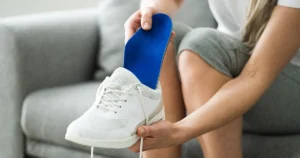
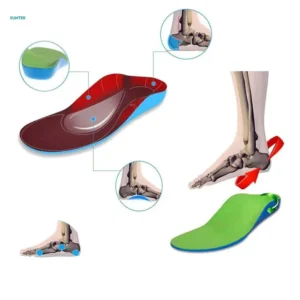
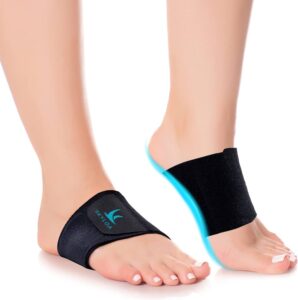





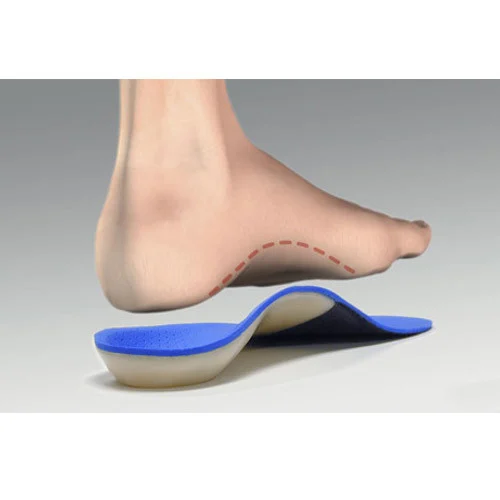
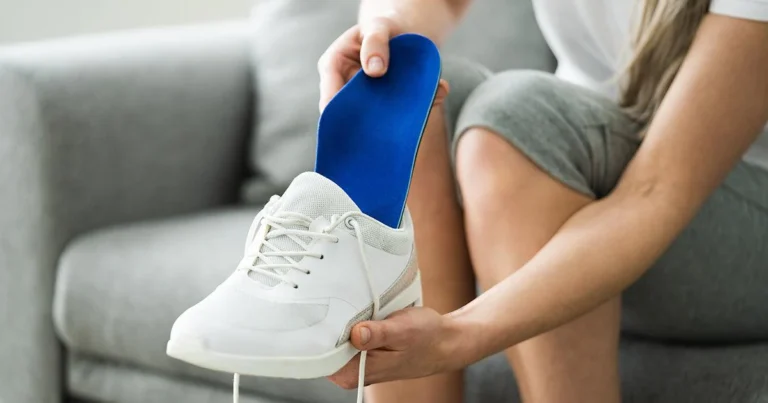
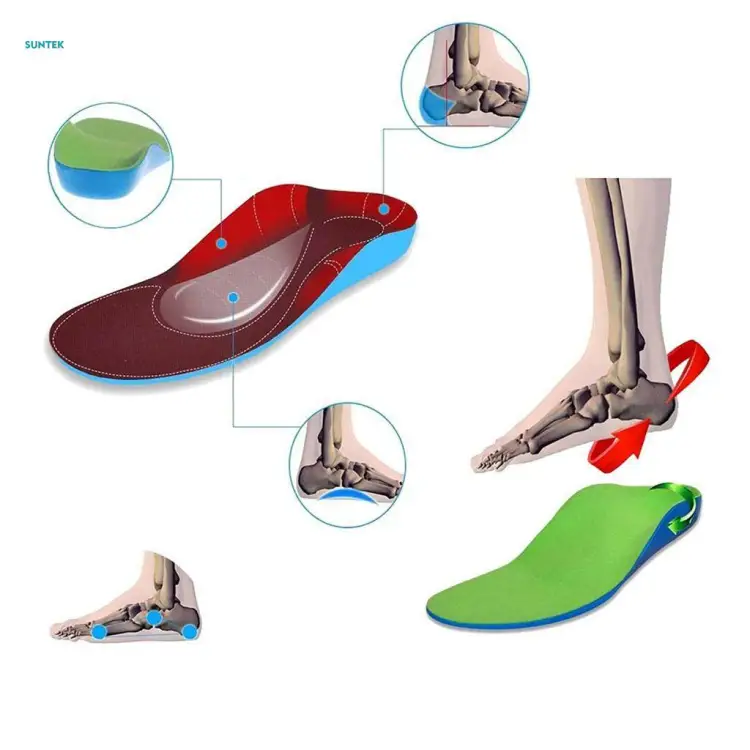
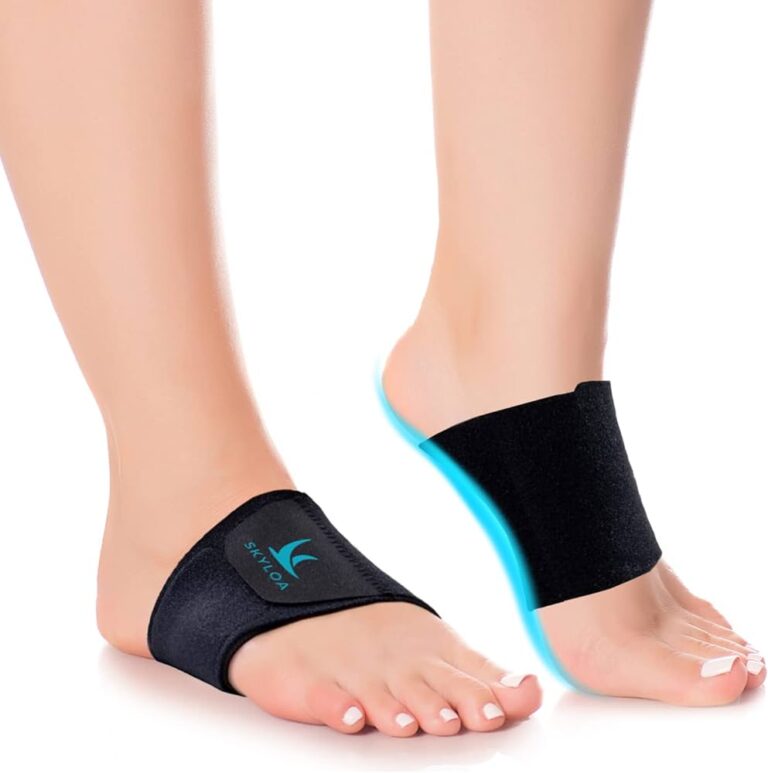

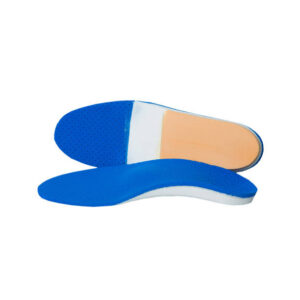





+ There are no comments
Add yours